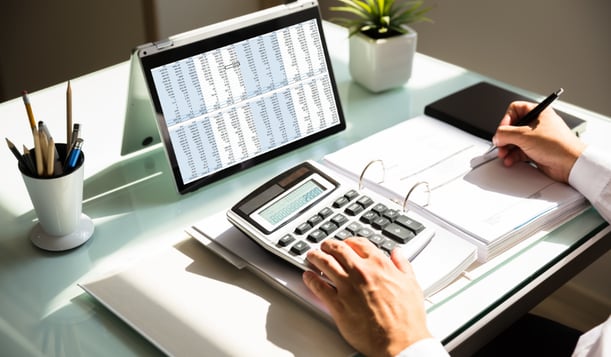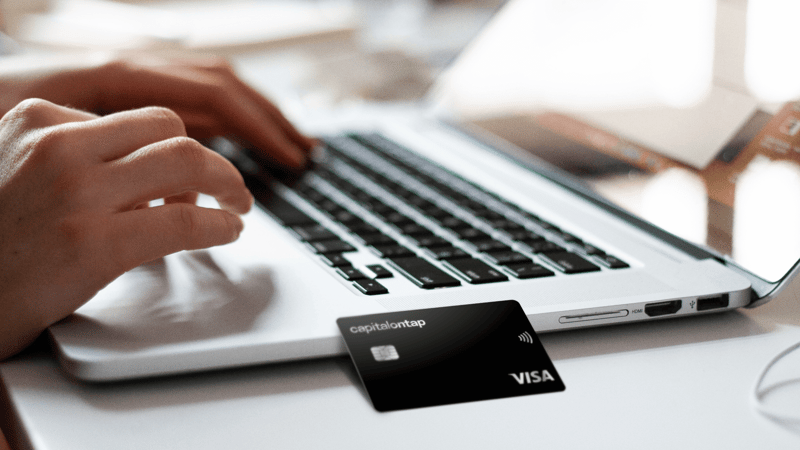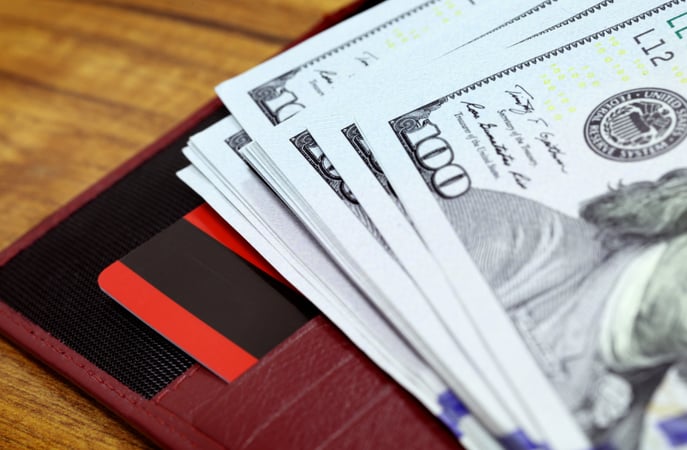Jump to a section
In the endless fog of paperwork, things can blur together. Following a paper trail requires a keen eye and a sharp sense of organization and attention to detail.
Rookies and old pros alike find it challenging to distinguish between purchase orders and invoices. Indeed, the two financial documents do have similar characteristics. Both contain details relating to purchases and fiscal activity, and both provide greater visibility and transparency between vendors and customers.
However, purchase orders vs invoices ultimately serve vastly different purposes for business owners, and both are needed to support a successful enterprise. In this article, we will explore the differences, purposes, and functions of purchase orders (PO) and invoices, and identify when and how to use them for your business.
What is a purchase order?
Within the business world, a purchase order is an initial communication between the buyer and seller. The PO outlines the goods and services requested by the buyer and offered by the vendor.
This is an official document that, upon issuance, requires confirmation from the vendor in the form of communication or rendering of the goods or services requested. An excellent resource for inventory and data-tracking, the PO has several financial purposes and serves many functions in regard to accountability, disclosure, and business procedure.
What information should be on a purchase order?
The language of the purchase order should set the expectations of what the product or service will be, what it will cost, and what, if any, specific methods or systems of payment will be required.
There are variations, but typically, a purchase order consists of:
- PO number
- Date of purchase
- Details concerning both the buyer and the product or service
- Delivery information such as home and business addresses.
Why is a purchase order important?
When used properly, the issuance of POs works to prevent overstocking and helps goods and service providers maintain proper inventory. It also prompts the vendor to deliver the goods and services requested, serving as a clear and concise layout of the terms of the purchase.
Simplifies invoicing
Purchase orders provide you with a record, which also helps simplify the next phase of the process - invoicing (more on that later).
Easier tracking of a product or service
The benefit of providing the PO at the beginning of the sales process is that it keeps you organized while you’re acquiring, preparing, and delivering the desired product or service.
It’s legally binding
When a seller accepts the PO, it acts as a legally binding contract. This binding is both convenient and reassuring, as it eliminates the need for any other binding agreements and ensures that both parties will do what the PO requires.
How to use a purchase order?
After placing an order, a buyer may issue a purchase order to the seller to ensure clear communication and avoid duplicate orders, as well as provide the vendor with an opportunity to check their stock before confirming the order.
The PO should include a unique number to aid in the tracking process or to serve as a reference number should complications arise.
If the purchase is recurring, a standing purchase order can be established to streamline the process and allow for repeat orders within a given time frame using the same PO number.
What is an invoice?
An invoice is a piece of documentation created by whatever entity has supplied the goods or services requested by the buyer. The primary purpose of an invoice is to maintain a record of solicited payments.
An invoice also prompts the buyer to provide payment for goods and services rendered. Essentially, once the promise of the purchase order has been fulfilled, the invoice follows as confirmation of the purchase’s completion. A proper invoice ensures that the payment is appropriately handled and its existence serves to promote compliance and satisfaction between the two parties.
What information should be on an invoice?
Traditionally, the following details make up an invoice:
- Invoice date and number
- The PO number
- Amount due
- Due date
- Seller’s signature
- Business Information (name, address, contact information)
- Payment terms and acceptable methods
- Descriptions of items or services
How are invoices issued?
Invoices are used to encourage a customer to issue payment for the goods or services rendered. They may be issued physically through the mail, or digitally through email. There are also invoicing software programs that exist to make the invoicing process quicker and easier, such as Quickbooks, Xero, or Sage.
Many businesses take the opportunity to personalize their invoices upon issuance to the customer in an effort to solidify their brand. When an invoice is issued, the information provided should mirror some of the information provided on the purchase order, such as delivery details, addresses, and order dates.
It is wise to check both the PO and the invoice to avoid wrong orders and confirm the products requested were also the products received.
What are the differences between purchase orders and invoices?
To put it simply, purchase orders are issued by those wishing to spend money on a product or a service, whereas invoices are issued by those wishing to receive funds. In other words, the buyer issues the PO, and the seller issues the invoice to receive the correct amount.
Not only do they differ in relation to issuers, but purchase orders and invoices differ in regard to timing. You can think of the purchase order and the invoice as bookends, with one initiating the transaction (PO) and the other (the invoice) concluding it.
Also, purchase orders tend to contain more information about the product or service provided. It is common for POs to give an estimated delivery date. Invoices differ, as they are laser-focused on the payment portion of the transaction. Finally, POs effectively regulate the inventory process whereas invoices help define costs and taxes.
What are the similarities between purchase orders and invoices?
Purchases orders and invoices do correlate in some instances. Both documents relate to the same goods and services as well as the same buyer and seller. In tandem, POs and invoices represent irrefutable proof of services requested and rendered, and their presence could be helpful if proof of the exchange is ever requested or required.
Additionally, if your business requires greater visibility and more effective spending optimization, utilizing both POs and invoices could work in your favor.
Why do businesses need both purchase orders and invoices?
If you are fortunate enough to own a fast-paced, thriving business, you know the importance of a paper trail. The accountability factor is not something to neglect, and having these documents on hand greatly supports that factor. Conflicts and miscommunications are inevitable, and whether you store your POs and invoices physically or digitally, you’ll be happy you have them when questions arise.
Not only does it help your business maintain visibility and transparency, but it also communicates a standard of professionalism and follow-through that consumers respect and admire. So when demand increases and orders grow in size and scale, you can rely on a solid system of issuing orders and responding to financial invoices.
The two together can alleviate several accounting burdens. To track accounts payable, buyers will refer to purchase orders. To track accounts receivable, buyers will refer to an invoice. Softwares such as Quickbooks, Xero, and Sage exist to simplify the accounting process and act as a one-stop shop for all business communications and correspondences.
Furthermore, since the purchase order acts as a legally binding agreement between the two entities, it can serve in place of a contract. The unique tracking numbers assigned to each document also come in handy when researching an order at the customer’s request. Later on, these records can be referred to as a means of confirmation and a basis for repeat orders.
Manage your business better with the Capital on Tap Business Credit Card
Purchase orders and invoices make the buying process easy and eliminate potential errors. Want to make the process even easier? Pay your invoices with a Capital On Tap Business Credit Card, issued by WebBank, and enjoy accruing rewards points redeemable towards your balance.
Not only will you pay no annual, foreign transaction, or US ATM fees, you’ll be able to track your paid invoices and keep all of your payments in one place. Small business credit cards such as the Capital on Tap Business Credit Card help streamline the spending process and build positive credit history for your business and for yourself! Apply now and get a decision within minutes.
Frequently Asked Questions
Can you invoice without a purchase order?
There are PO invoices and non-PO invoices. PO invoices have a purchase order for purposes of comparison. In fact, many companies complete a process called three-way invoice matching to fully validate the PO invoice and confirm its relation to the previous purchase order. Conversely, non-PO invoices, sometimes referred to as "expense invoices," do not have a corresponding purchase order.
Does the purchase order need to match the invoice?
In short, yes. You must be able to match the details from both documents. For example, currency and supplier information should match between documents.
Which comes first: invoice or purchase order?
The purchase order initiates the transaction and is followed by the invoice once goods or services are rendered to the customer’s satisfaction.
Can the invoice be more than the purchase order?
In the instance you receive an invoice larger than the purchase order, check that you are not waiting for additional items to be delivered. Your PO should be changed to reflect the invoice's greater amount. Check the wording on the PO as well – the price listed may have been an estimate and should be defined as such.
What is the purchase order number (PO)?
A purchase order number is a unique number assigned to an order to help merchants and vendors track orders and monitor their progress.
© Copyright 2022. Capital on Tap Business Credit Cards are issued by WebBank. © 2022 New Wave Card LP dba Capital on Tap.










